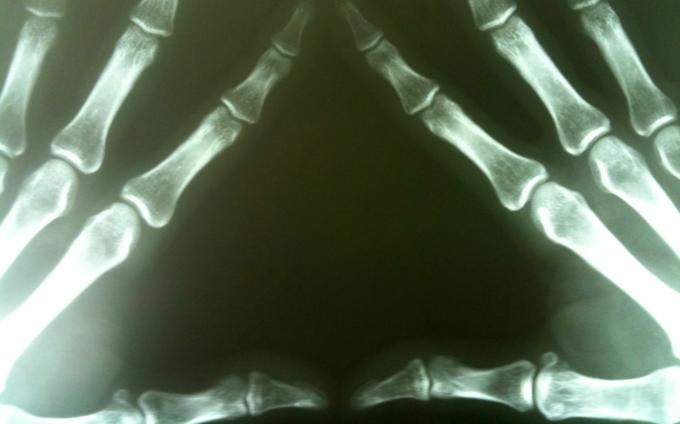
Faith
May is National Arthritis Awareness Month, a perfect time to get acquainted with the most common causes, symptoms, facts and myths about arthritis.

Johnson
Although arthritis is common, it is a widely misunderstood condition. Many people don't realize that the term itself refers to a broad category of over 100 distinct disorders, all of which cause pain, stiffness, inflammation and/or deterioration in any of the hundreds of joints in the human body. These disorders stem from a variety of causes.
May is National Arthritis Awareness Month, a perfect time to get acquainted with the most common causes, symptoms, facts and myths about arthritis. Far from being a minor age-related ailment, arthritis is the leading cause of disability in the United States, affecting people of all ages (one type, "juvenile arthritis," specifically affects children). An estimated 46 million adults and 300,000 children in the United States alone have some form of arthritis, and experts expect that by 2030 that number will increase to 67 million.
Because there are so many different types of joints and possible joint disorders, what follows is just a brief description of the three most commonly occurring forms of arthritis: osteoarthritis, rheumatoid arthritis and gout.
Osteoarthritis
A joint is literally the meeting place of two bones -- where the bones "join" together. The end of each bone is capped with a soft cartilage that absorbs shock and eliminates friction. Without cartilage, our bare bones would scrape against one another, making each slight movement a painful ordeal.
Osteoarthritis occurs when the protective cartilage starts to wear away. With diminishing insulation, the affected bones become irritated and painful when they move. In severe cases, the cartilage wears away to the point where bone actually does start to grind against bone. Other than heart disease and cancer, osteoarthritis is the most common chronic disease. Risk factors include family history, previous joint injury, age, weight and chronic stress on the joints. Symptoms include joint pain, stiffness and a "grating" sensation during movement. You may also notice "bone spurs," little clumps of bone that arise around the joint in response to the loss of cartilage.
While medication can help alleviate symptoms, many rheumatologists emphasize exercise as an important natural treatment. By building up muscles around the affected joints, regular exercise creates additional joint cushioning and comfort. Weight loss can also help. According to the Arthritis Foundation, for every pound of weight lost, four pounds of pressure are taken off the knees.
Rheumatoid arthritis
Unlike osteoarthritis, rheumatoid arthritis has nothing to do with wear and tear, but is an autoimmune disorder of mostly unknown origins. This condition often targets major joints such as the knees, wrists, hips, shoulders, elbows and fingers. These joints are surrounded by a capsule called the "synovium" that secretes an important lubricating fluid. Rheumotoid arthritis is a condition in which the immune system starts attacking the synovium. The resulting inflammation can alter the appearance of the joints and inhibit normal movement. Grabbing a glass from the cupboard, typing on a keyboard or writing with a pen can turn into painful or impossible tasks for someone with severe rheumatoid arthritis. In some cases, the immune system will cause inflammation in nearby organs as well as joints, leading to lung disease and heart disease.
Researchers are not sure what causes rheumatoid arthritis, but stress is thought to have a significant impact on how we experience its painful symptoms. Studies have shown that both rheumatoid arthritis and the stress response use the same immunological pathway. Increased stress can therefore trigger increased physical pain. In turn, those who have successful stress management routines are more likely to experience less severe joint pain.
Gout
The symptoms of gout most frequently occur in the big toe. Gout is extremely painful, causing the toe to swell up and become very tender for hours. It occurs mostly in men, but can also affect older women.
The uric crystals that cause gout are a result of excessive uric acid in the blood. When there is more uric acid in the body than the kidneys can process, crystals form, causing inflammation and intense joint pain. The good news is that gout is treatable. Diets high in meats, fish and poultry have been implicated in excessive amounts of uric acid, as well as the consumption of beer. In addition, a rheumatologist can prescribe medication to control and help prevent gout flare-ups.
Arthritis support
Interested in learning more? The Arthritis Foundation is one of the most trusted resources for arthritis information and support. Visit them online at www.arthritis.org to learn about treatments, new research and alternative therapies for the many different types of arthritis.
ADAM JOHNSON WRITES FOR YOUVILLE ASSISTED LIVING RESIDENCES, MEMBER OF COVENANT HEALTH SYSTEMS, A CATHOLIC, MULTI-INSTITUTIONAL HEALTH AND ELDER CARE ORGANIZATION SERVING NEW ENGLAND.
- Adam Johnson writes for Youville Assisted Living Residences, member of Covenant Health Systems, a Catholic, multi-institutional health and elder care organization serving New England.
Recent articles in the Faith & Family section
-
Scripture Reflection for April 21, 2024, Fourth Sunday of EasterJem Sullivan
-
The new Temple: How Easter changes religionDr. R. Jared Staudt
-
The wonder of Ordinary TimeLucia A. Silecchia
-
Is there still responsibility for past sins after confession?Jenna Marie Cooper
-
Wounds, not scarsJaymie Stuart Wolfe


















